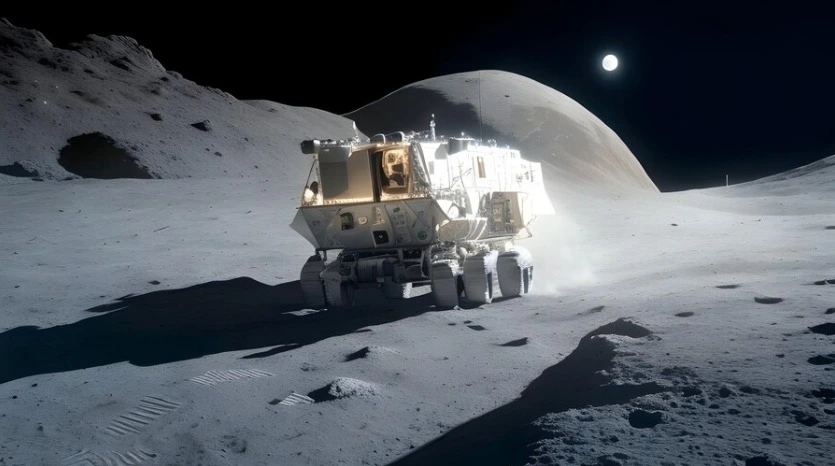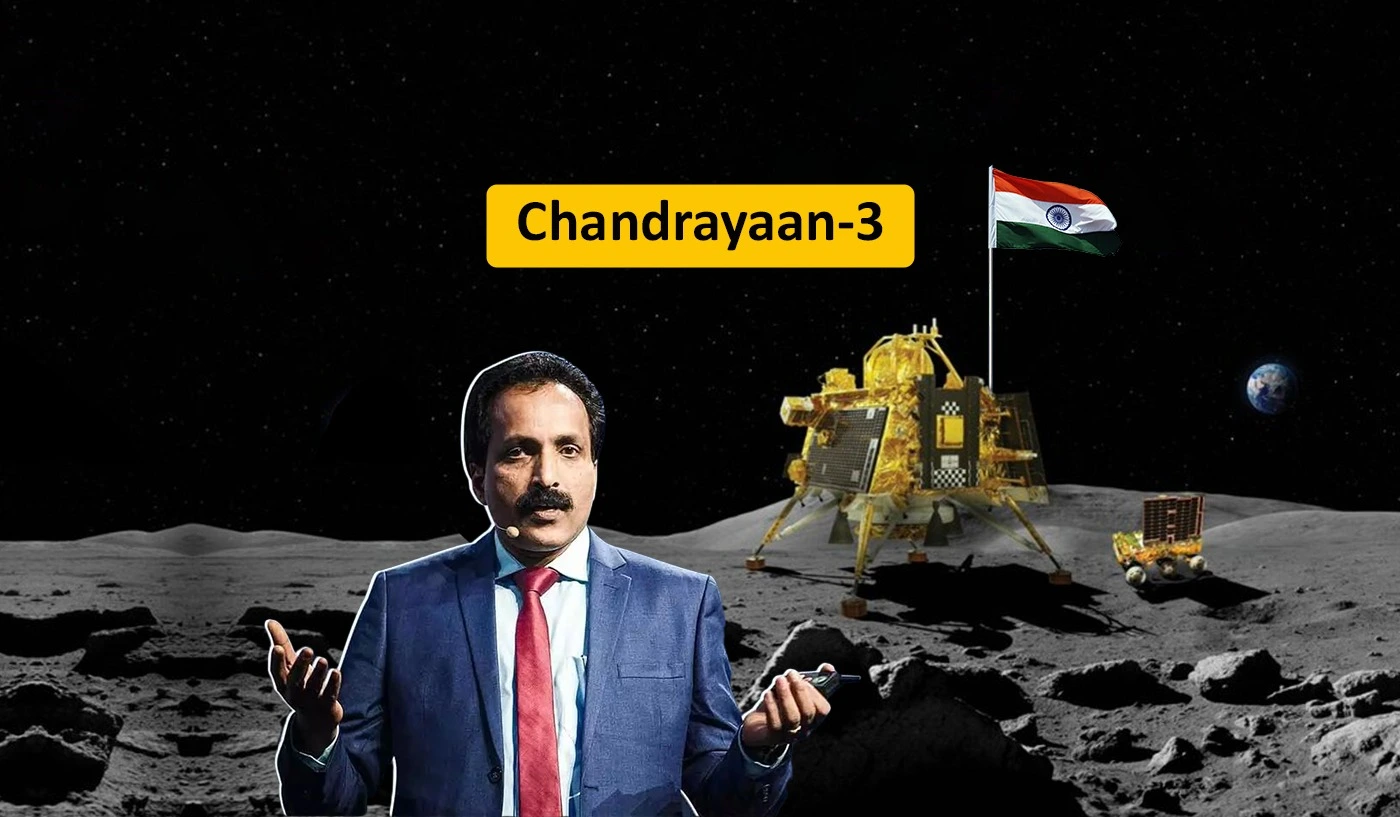Kailasavadivoo Sivan played a big role behind the success of Chandrayaan 3. Journey of Kailasavadivoo Sivan with chandrayaan-3 is a successful landing on the moon. This man’s inspirational journey has been very difficult. He accomplished that work which no human being has been able to do. On 23 August 2023, Chandrayaan-3 was successful. The lander of Chandrayaan 3 successfully landed in the south polar region of the Moon according to the plan. Finally, India has achieved a soft landing on the moon. On October 22, 2008, they launched the Chandrayaan-1 mission, which, for some reason, did not succeed. At that time, the Indian space research organization (ISRO) found the water on the moon.
ISRO launched Chandrayaan-2 in 2019, aiming to make it their first lunar lander. The first lunar lander launched by ISRO, Chandrayaan-3, landed in the southern polar region of the Moon in 2023.

Biography on Journey of Kailasavadivoo Sivan with chandrayaan-3.
The journey till K Shivro became the ISRO chief was not that easy.A lengthy backstory outlines his struggle. K Sivan’s full name is Kailasavadivoo Sivan. He was born on 14th april, 1957(sunday). He was born in the small village of Sarakkalvilai. This village is located in Tamil Nadu of Kanyakumari. Sivan’s family was so poor that he did not even have money to study. Sivan used to study in the government school of the village itself. They studied at the same school till 8th. He had to go ahead for further studies but there was no money in the house. And K Shivan had to raise money for his studies and for this he started selling mangoes in the nearby market, then he used to pay his fees with the money he got from that.
Kailasavadivoo Sivan with chandrayaan-3 In the interview, he mentioned that I was born into a poor family, and a lack of finances halted my studies. He mentioned that my father worked as a struggling farmer, selling mangoes in the nearby village. I also used to go there and sell those mangoes to pay my studies fees. Shivan completed his intermediate while selling mangoes but needed more money for his graduation. Due to lack of money, his father enrolled him in Hindu college. And when he reached college to do BSC, he was only in slippers and dhoti kurta. Earlier Shivan did not even have enough money to buy slippers for himself. Shivan studied diligently and became the first graduate from his family.
He got 100 out of 100 marks in math. And then he changed his mind, now he wanted to study science instead of math. And for this he reached Madras Institute of Technology (MIT). There he got a scholarship and due to this he did B.Tech in Aeronautical Engineering. After doing B-TECH, Sivan did his master’s in aerospace engineering from the Indian Institution of Science. And when Sivan came out of IISC Bangalore, he had become a big scientist of aeronautics. Later started his job with ISRO, which is the Indian Space Research Organization.
He got his first job in the Polar Satellite Launch Vehicle (PSLV) project team. K Sivan developed a software named “Sitara” to place the rocket in orbit. Kailasavadivoo Sivan with chandrayaan-3. The software he created was hugely successful. And it began to receive discussion in India’s scientific community. During this, Indian scientists went one step ahead of PSLV and started preparing for GSLV. On April 18, 2001, they conducted a test of the GSLV (Geosynchronous Satellite Launch Vehicle).
But the testing failed. Because the scientists could not reach the place where they wanted to reach.
Having achieved mastery in this task, K Sivan was given the responsibility of launching GSLV with success. This achievement led to K Sivan being recognized as the Rocket Man of ISRO. Following this, Sivan and his group got to work on a new project. Reuse was the goal. A re-usable vehicle implies that after detaching the satellite from the launch vehicle, the same launch vehicle can be employed once more. This hasn’t happened in any nation yet. Kailasavadivoo Sivan with chandrayaan-3. Indian scientists under the leadership of K Sivan had joined it.
Meanwhile, Sivan obtained his doctorate degree in Aerospace engineering from IIT Bombay in the year 2006. Later, he assumed the role of the chief of ISRO’s launch vehicle fuel division, a task that spanned over a year. Subsequently, K Sivan was appointed as the head of Vikram Sarabhai’s space, a significant position. the facility tasked with building the rocket that will carry India’s satellites into orbit. There, even one year of Shivan was not completed, at that time the tenure of ISRO chief AS KIRAN KUMAR KAL was completed. And then on 14 January 2015, K Sivan was appointed as the head of ISRO. K Sivan, who listens to classical Tamil music and does gardening in his spare time, has been awarded many awards.
Under his leadership, ISRO created a world record by sending 104 satellites into space simultaneously on 15 February 2017. Following this, ISRO launched Chandrayaan 2 on July 22, 2019. On 2 September, Chandrayaan 2 split into two parts. The first part was the orbiter which started orbiting the moon.
Initially, everything proceeded smoothly. However, a sudden loss of contact occurred, and the world witnessed the subsequent events. This became an emotional moment for everyone.
The ISRO chief cried while hugging PM Modi. Everything did not turn out as expected but it is K Sivan who has achieved success even after facing a lot of problems in his life and now he missed a big success by a little bit. But the world remained hopeful, then Shivan started preparing for Chandrayaan 3. Kailasavadivoo Sivan with chandrayaan-3. It took a long time to make it and finally succeeded. Chandrayaan 3 made a safe landing on 24 August 2023. India has become the fourth nation in the world to accomplish this feat. Prime Minister Narendra Modi made an important announcement while addressing ISRO scientists at the ISRO Telemetry Tracking and Command Network Mission Control Complex in Bengaluru. PM Modi declared that the place where Chandrayaan-3’s moon lander made contact with the surface will receive the name ‘Shiv Shakti’.
This was a proud moment for all indians. Chandrayaan 3 mission has only three objectives. First, to demonstrate the capability of soft-landing on the Moon. The second objective is to demonstrate the rover Vikram’s ability to walk on the Moon. Third, ISRO aims to conduct in-situ scientific experiments.

